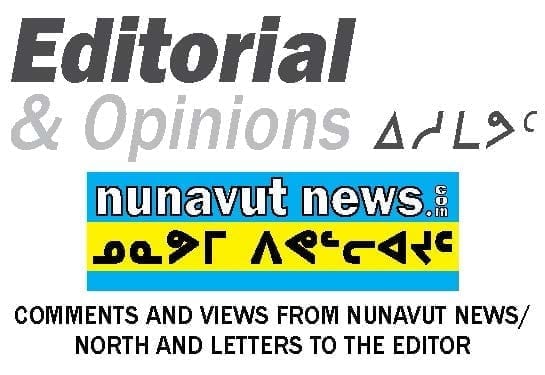The issue: Where IQ and Western knowledge meet
We say: Recognize the worth of both
The polar bear is a shining symbol in Western science of all things going wrong, at least as far as climate is concerned.
 Arctic ice is on a historic retreat. On July 16, the National Snow and Ice Data Center reported that Arctic sea ice covered 7.51 million square kilometres as of July 15, which was 330,000 square kilometres below the previous record low for that date, set in 2011.
Arctic ice is on a historic retreat. On July 16, the National Snow and Ice Data Center reported that Arctic sea ice covered 7.51 million square kilometres as of July 15, which was 330,000 square kilometres below the previous record low for that date, set in 2011.
This retreating sea ice is troubling as "longer ice-free periods mean bears will be forced to spend more time on land, during which they have greater opportunity to wander around in places they previously didn't visit," says Peter Molnar, assistant professor in the Department of Biological Sciences at the University of Toronto, one of six authors of a new study titled Fasting Season Length Sets Temporal Limits for Global Polar Bear Persistence.
More visibility doesn’t necessarily mean more bears, either, only that they are coming closer to human settlements in search of easier food sources, which can turn into deadly encounters – whether the loss of life is human, or a bear that’s become a problem animal due to habituation.
Some sub-populations could die off sooner than others, with bears in the southern Hudson Bay and Davis Strait possibly facing their demise within two decades and others in the next 80 years, the study predicts.
Of course, that’s assuming that the prediction models of western science based on cold numbers are actually set in stone.
Philip Putumiraqtuq, chair of Baker Lake Hunters and Trappers Organization, said he places greater value on Inuit observations and teachings.
"The way they discuss the scientists, what they say, I never really go for that. I only follow my cultural ways," he said. "My dad, what he said before is '(the animals will) still stick around.'"
Peter Eecheak, manager of the Ikajutit Hunters and Trappers Organization in Arctic Bay, said scientists "are probably just guessing" because "where we are, they (polar bears) are pretty healthy. They can survive on the land, too. They can hunt seals right in the open water. They can hunt narwhal right in the open water. They'll survive for sure," he said.
There are also concerns about Baffinland’s increased shipping season affecting the marine ecosystem of Milne Inlet.
In its 2019 shipping season from July 17 to Oct. 31 Baffinland shipped a total of 5.86 million tonnes of iron ore from its Milne Inlet Port to global markets. Eighty-one voyages were executed, up from 5.1 Mt of ore over 71 trips in 2018.
This year the number of voyages could exceed 100.
Pond Inlet Mayor Joshua Arreak said the community is keeping a close eye on any possible effects that the shipping traffic might have on the environment, wildlife and local people.
"Scientifically they say no, there is no significant impact but for hunters, yes, they say there’s an impact. All we can do is go by the numbers," Arreak said. "Let’s see what happens this year. We’ll keep monitoring ourselves."
Citizen science is one of the greatest benefits to a globalized society, as we can use online tools to help track and monitor ecosystems on a scale much closer to home.
Many Inuit students today are getting a grounding in the sciences through school and also exposure to traditional skills from their extended families. This upcoming generation will be able to see from both sides, incorporating Inuit Qaujimajatuqangit alongside scientific observation. That may make all the difference in conservation conversations to come.